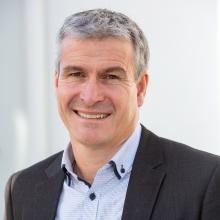
While the relative remoteness and unique terrain of the Queenstown Lakes and Central Otago Districts creates infrastructure challenges not seen in other growing communities, the areas boast the highest solar power uptake rate in New Zealand.
According to Electricity Authority data, as of June 2023, solar uptake in parts of Central Otago — specifically, Wānaka, Upper Clutha and Cromwell — were two and a-half times higher (7%) than the national average of 2.6%.
SolarZero chief executive Matt Ward said while electricity prices were one factor driving people towards solar, there was also the added bonus of providing resilience if the power went out.
In order for New Zealand to reach its renewable energy targets, people needed to embrace solar and battery storage, Mr Ward said.
"We all have a role to play in moving towards clean energy with generation, storage and grid services that keep the power system reliable, secure and safe as we work towards achieving."
Whitestone Energy’s Queenstown-based energy sector consultant Steve Batstone said the combination of rapid population growth and the region’s goal to fully decarbonise the tourism industry by 2030 meant peak loads looked set to increase.
The region, like many others throughout New Zealand, was planning for how the existing infrastructure would cope with the increased demand, Mr Batstone said.
Electricity consumption is estimated to increase 60-80% by 2050 as New Zealand moves away from fossil fuels, meaning additional electricity will have to come from somewhere and be sent where required.
Local lines companies and Transpower needed to maintain and upgrade existing networks and a medium-term plan to increase the capacity of the existing network had been committed to, but the best possible solution — a lower-cost outcome and greater resiliency — was a mix of options that focused on both supply and demand, Mr Batstone said.
Systems containing solar panels and batteries played an important role in strengthening the region’s energy resilience, he said.
When utilised to their potential, solar panels and batteries could complement traditional solutions, deferring investment and cost to communities until necessary.
Aurora Energy is looking to incentivise uptake of distributed energy resources to reduce strain on the network at peak times.
Collaborating with the lines company, solarZero has progressed advanced grid services into Wānaka by introducing solar as a subscription service, allowing homeowners to access solar power and battery storage without needing to pay for the hardware cost.
Aurora Energy asset management and planning general manager Glenn Coates said the company was backing solar and storage as part of New Zealand’s energy future.
"Batteries create a lot more choice around when households and businesses decide to take energy from the power system," he said.
"In the past, if you wanted to use your toaster you had to take from the grid. But if you’ve got a battery and some solar panels on your roof, you have access to an alternative option that, depending on the time of day and market conditions, provide a lower-cost solution."
Despite Queenstown and Wānaka being located near some of the country’s biggest hydro lakes, and around 80-85% of New Zealand’s electricity being considered renewable, everyone had a part to play in the energy system technology choices they made, he said.
Whether solar with battery storage, smart electric vehicle chargers or continued hot water management, all created flexibility in the power system to enable the best possible low-carbon future.
"No matter where you are in New Zealand, when a gas turbine up north or the coal turbine at Huntly starts up because of high demand, we are all part of the reason why that has to happen. You can’t say that because we’re closest to the generation we’re fine, because if everybody could throttle back a bit we wouldn’t need to turn on those carbon-emitting power stations."














